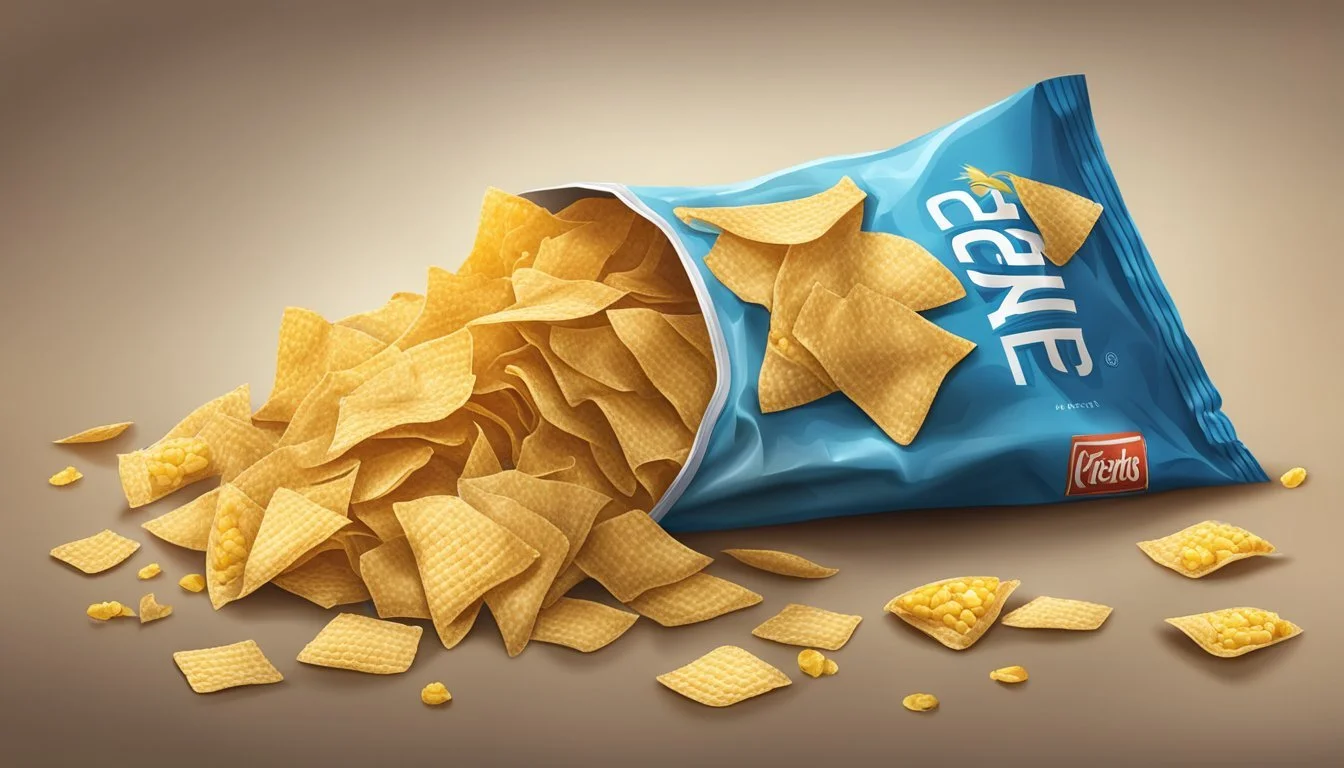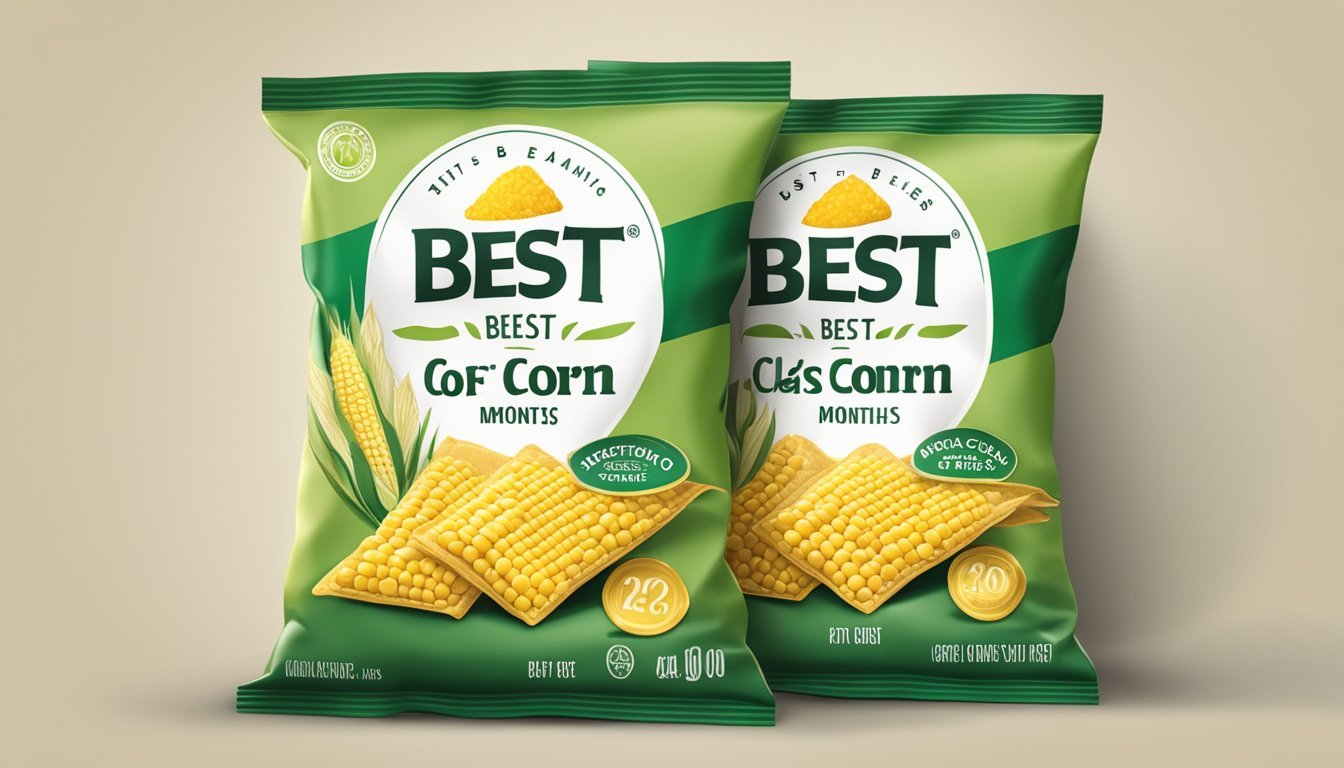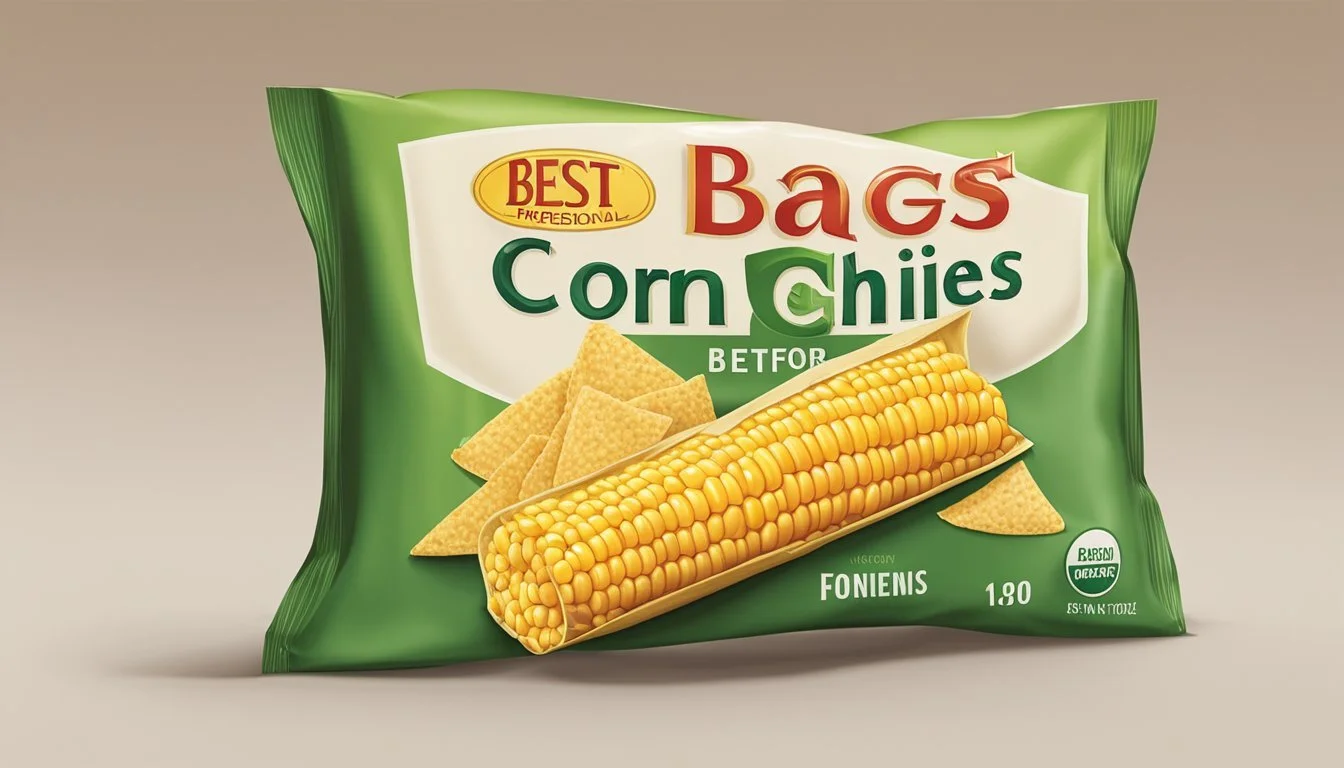How Long Do Corn Chips Last?
Unveiling Shelf Life and Preservation Tips
Corn chips (how long do corn chips last?) are a popular snack known for their crunch and flavor. Explore the factors influencing the shelf life of corn chips and learn the best storage practices to ensure they stay fresh for as long as possible. Whether you've opened a bag of corn chips or are storing an unopened package, discover how long you can expect your snacks to maintain their quality.
Understanding Corn Chips
Corn chips are a unique snack, distinct in texture and flavor from other popular chip varieties. They are typically thicker and have a pronounced corn flavor.
Corn Chips vs. Tortilla Chips
Corn chips and tortilla chips both originate from corn, but they are prepared and processed differently. Corn chips are made from cornmeal that is mixed with water and salt to form a dough, which is then fried. They are commonly thicker and sturdier, suitable for dipping without breaking. In contrast, tortilla chips are made from whole corn kernels that have been cooked and soaked in a lime-water solution before being ground to make a dough, called masa. This masa is then rolled out, cut into shapes, and fried or baked. Tortilla chips are often lighter and have a milder taste compared to corn chips.
Texture:
Corn Chips: Thicker, crunchier.
Tortilla Chips: Thinner, can be more brittle.
Flavor:
Corn Chips: Strong, robust corn flavor.
Tortilla Chips: Milder corn flavor, often salted or seasoned.
Corn Chips vs. Potato Chips
When comparing corn chips to potato chips, the primary difference lies in the base ingredient. Corn chips use cornmeal, while potato chips are thin slices of potato fried until crispy. The taste profiles are quite distinct because potatoes and corn impart different flavors and textures. Potato chips are known for their light, delicate crunch and are available in a wide range of flavors due to their relatively neutral taste. This allows them to be coated with various flavorings. Conversely, corn chips generally retain their natural corn taste, which is more pronounced and less versatile for flavoring.
Base Ingredient:
Corn Chips: Cornmeal.
Potato Chips: Potato slices.
Texture and Flavor:
Corn Chips: Hearty crunch, strong corn taste.
Potato Chips: Light, airy crunch, neutral with various flavorings.
Shelf Life Factors
The shelf life of corn chips is influenced by specific environmental factors that can either extend or reduce their freshness. Understanding these factors is key to maintaining the quality of corn chips over time.
Effect of Moisture on Corn Chips
Moisture is one of the biggest adversaries of corn chips' shelf life. When corn chips are exposed to moisture, it leads to a stale texture and can also encourage the growth of mold. To prevent this, corn chips should be stored in an airtight container to keep out ambient moisture, especially in areas of high humidity. The pantry, being a cool and dry place, typically offers ideal storage conditions to combat moisture intrusion.
Impact of Storage Conditions
Proper storage conditions are paramount for maximizing the shelf life of corn chips. They should be kept in a cool, dry place—the pantry is an ideal location—away from sources of heat or direct sunlight, which can degrade their quality. Humidity levels should be low, as high humidity is linked to increased moisture content, which negatively affects the chips. Additionally, after opening, returning the corn chips to an airtight container ensures freshness for as long as possible.
Proper Storage Methods
Proper storage of corn chips is essential to maintain their freshness and crispiness, whether the package is opened or unopened. Specific techniques and containers are recommended to ensure longevity.
Storing Unopened Corn Chips
Unopened corn chips are best stored in a cool, dry place. To prevent degradation of quality, they should be kept away from direct sunlight and heat sources. Under these conditions, an unopened package can last for 2-3 months maintaining best quality.
Storing Opened Corn Chips
Once opened, corn chips should be kept in an airtight container or a reusable bag to keep them crispy. They should continue to be stored in a cool and dry environment. For optimal freshness, it's best if one consumes the opened corn chips within 2-3 weeks.
Best Practices for Air-Tight Storage
Utilizing airtight storage options is crucial for prolonging the shelf life and crispness of corn chips. Containers with tight-sealing lids or zip-top bags are ideal. Removing as much air as possible before sealing the container will help to keep the chips fresher longer. If one has a vacuum sealer, it can be used for even better results. Refrigeration is typically not necessary, but if living in a particularly warm or humid environment, storing the chips in the fridge may help prevent them from becoming stale. However, one must ensure the container is completely airtight as refrigerators can introduce moisture.
Signs of Spoilage
When assessing the condition of corn chips, it is imperative to watch for signs of spoilage which can impact both the safety and quality of the snack. Chips showing signs of spoilage should be discarded.
Color and Texture Changes
Color: Fresh corn chips should maintain their original hue. Discoloration can signify spoilage, particularly if chips appear unusually dark or have developed spots.
Texture: Corn chips are prized for their crispness. If chips become soggy or lose their crunch, they are likely stale. The loss of texture often precedes further spoilage.
Changes in Smell and Taste
Smell: A telltale sign of spoiling is an off smell. Corn chips should have a neutral or slightly toasted corn aroma. Any rancid or unusual odors indicate that the chips should not be consumed.
Taste: Should a chip pass visual and olfactory inspection, a final taste test could be the decisive factor. Spoiled chips might have an off taste that deviates from their expected flavor profile. If the taste isn't right, it's time to discard the chips.
Maximizing Freshness
To ensure that corn chips maintain their crunchy texture and flavor, proper storage is essential. This section provides insight into keeping chips crispy and flavorful, and how to achieve ideal conditions for homemade chips.
Keeping Chips Crispy and Flavorful
Corn chips are best enjoyed when they're crispy and full of flavor. Whether they're for nachos or to be dipped in salsa, guacamole, or sour cream dip, maintaining their freshness is crucial. Here are specific ways to keep your chips in peak condition:
Store bought corn chips have a best quality span of 2-3 months unopened. Once opened, they should be consumed within 2-3 weeks.
To keep chips crispy after opening, transfer them to an airtight container or a resealable bag to prevent staleness.
Avoid moisture and heat, as they will quickly degrade the chips' quality. Keep them in a cool, dry place.
Some suggest the freezer can extend the crispiness of chips. However, this method may be less practical unless chips need to be stored for an extended period.
Ideal Conditions for Homemade Chips
For those who enjoy homemade tortilla chips, freshness and crunchiness are indicators of a successful batch. To achieve optimal results:
Store homemade chips in containers that prevent air exposure. This means using lids that seal tightly or vacuum sealers if available.
Ensure chips are completely cooled before storage, as residual warmth can lead to soggy chips.
Consume within 1 week for the best experience, since homemade versions may lack preservatives that extend shelf life.
Consider lower humidity storage areas to maintain the crispy texture.
Homemade chips should be paired immediately after being made with dips like salsa, guacamole, and sour cream dip for the freshest taste and crunchiness.
Consumption Guidelines
When assessing the consumption guidelines for corn chips, it is essential to consider both food safety and the quality of the product past its labeled dates. Consumers often have questions about best-by, sell-by, and expiration dates as they relate to both flavor and food safety.
Food Safety and Expired Chips
For food safety, it's important to understand the differences between best-before and expiration dates. Best-before or best-by dates are provided by manufacturers and typically indicate when a product is expected to be at its peak quality. Chips consumed shortly after these dates may not be at their ideal freshness but are generally still safe to eat, provided the packaging is intact and they have been stored properly.
In contrast, expiration dates are critical with certain products, like infant formula, where the safety of the food beyond this date cannot be guaranteed. Corn chips typically do not have an expiration date, but rather a best-before date which is more a guideline for quality than a food safety cutoff.
Post-Expiration Date Consumption
After the best-before date, consumers can use their senses to evaluate the quality of corn chips:
Visual Check: Look for any signs of mold or unusual changes in appearance.
Smell Test: Sniff the chips for any off odors that could indicate spoilage.
Taste Assessment: If they pass visual and smell tests, a small tasting can help assess any changes in flavor.
Consuming corn chips a few weeks past their best-before date is usually acceptable given there are no signs of spoilage, and the chips have been stored in a cool, dry environment. However, the quality, such as crispness and flavor, may decline.
Proper storage can extend the life of unopened corn chips, often well beyond the best-before date:
Storage conditions: Keep in a cool, dry area.
Sealed tightly: Using a clip or airtight container after opening can help preserve freshness.
Food Safety Table for Corn Chips
Storage Condition Unopened Opened Cool, Dry Place Up to 3 months past best-by date (for best quality) 1-2 weeks Compromised Packaging Quality not guaranteed Consume as soon as possible
Consumers must remember that these guidelines are for quality assurance rather than safety, except for infant formula which is governed by different regulations.
Creative Uses for Stale Chips
When corn chips lose their crispness, they need not be discarded. There are appetizing ways to repurpose them into tasty dishes, ensuring no food goes to waste.
Making Nachos with Stale Chips
One can still enjoy nachos even when the chips have gone stale. To revive the chips, one can layer them with cheese and preferred toppings, and then bake them until the cheese melts and the chips regain some of their original crispiness. This process can breathe new life into stale chips, turning them into a delicious snack or meal.
Recipes Incorporating Stale Tortilla Chips
Stale tortilla chips serve as a versatile ingredient in various recipes. They can be used as a crunchy element in salads, as a base for chilaquiles with sauce and cheese, or as a binder in meatloaf. Additionally, one can crush them and use them as a breading for chicken or fish, adding texture and flavor.
Packaging Innovations
Recent advancements in packaging technology have focused on prolonging the freshness of corn chips by enhancing their storage capabilities. Consumers and manufacturers alike benefit from these innovations, as they reduce waste and maintain product quality.
Reseable Packaging Options
The introduction of resealable bags has been a game-changer in the snack industry. These bags feature a built-in mechanism that allows them to be securely closed after being opened, limiting the exposure of the chips to air and moisture. Key benefits include:
Extended Freshness: By sealing the bag after each use, consumers can maintain the crispiness and taste of corn chips for a longer period.
Convenience: Resealable packaging provides on-the-go snacking options without the need for additional storage containers or clips.
Impact on Shelf Life and Freshness
Innovative packaging not only serves to protect the product but also extends its shelf life. There is a direct correlation between packaging quality and the longevity of a product's freshness. For instance:
Barrier Protection: Modern packages are designed to offer improved barrier protection against external factors like humidity, light, and oxygen, all of which can degrade the quality of corn chips.
Reduced Discards: With higher quality packaging that extends shelf life, consumers are less likely to discard stale chips, leading to less food waste.
Health and Dietary Considerations
When considering the health and dietary aspects of corn chips, consumers should be aware of their nutritional content, potential allergens, and any available alternatives that cater to specific dietary needs.
Gluten-Free and Alternative Corn Chips
Corn chips typically cater to gluten-free diets since their primary ingredient, corn, does not contain gluten. However, it is essential to check for cross-contamination if they are produced in facilities that also process wheat or other gluten-containing grains. Oils used in frying corn chips can impact their healthfulness. Unhealthy oils high in saturated fats should be minimized in a balanced diet, with a preference for chips cooked in oils with a better health profile, such as olive or avocado oil. Gluten-free corn chips may also include alternative grains or legumes to enhance their nutritional value or provide different flavors.







